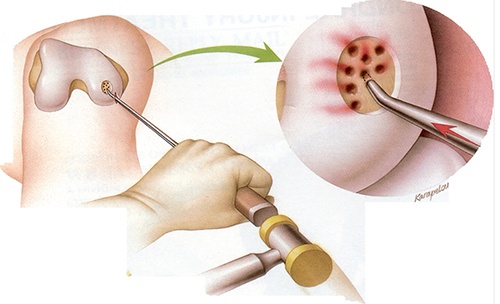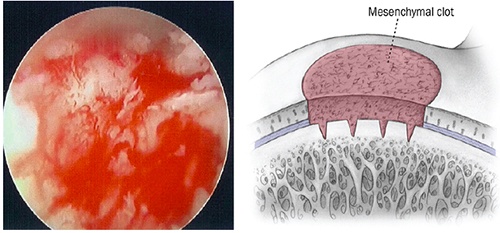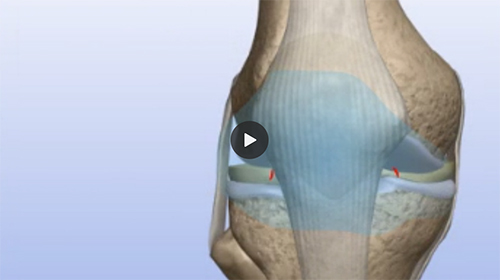The surface of your knee joint is covered by articular cartilage. This a complex substance acts as a protective layer and enables your knee joint to move smoothly and freely
Unfortunately when it is damaged it has a very poor healing potential. Thus if you have a significant cartilage injury ongoing pain, swelling and catching may occur. Arthritis may develop if the damaged cartilage is not restored.
To stimulate new cartilage formation a microfracture can be performed. Small holes are made in the bone where your cartilage was damaged. This results in a blood clot forming in your damaged cartilage area. This blood clot contains stem cells which can turn into new cartilage thus forming a protective layer for your knee


You need to protect your blood clot while it matures. So you are likely to be on crutches for up to 6 weeks just touching your foot to the ground. After 6 weeks you can start placing weight through your knee as pain allows.
Ongoing knee motion helps promote your new cartilage to grow thus we encourage you to use an exercycle with low resistance or use a skateboard if an exercycle is not available or you don’t have enough motion to ride the exercycle. You sit on a chair, place your foot on the skateboard and move it back and forward for 15 minutes three times a day.
This new cartilage takes time to mature thus we need to limit your exercise for the first six months. You must avoid impact loading and cutting, pivoting and twisting activities for this period
It can take up to 12 months for the new cartilage to fully mature so you have to be patient over this period. There is an 80% chance you will have a significant improvement in your knee however it is unlikely it will be normal. If after a year you continue to have problems an MRI scan can be performed to evaluate your microfracture repair tissue
-
 Source: Understand.com
Source: Understand.com
